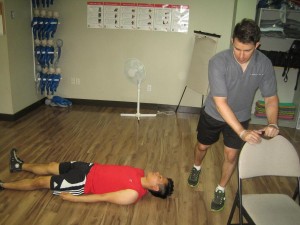A febrile seizure refers to a convulsion in children or child fit that may be triggered by rising body temperature i.e. fever or from infection. For most parents, seeing your child having a seizure can be very terrifying, even though it only lasts for a few minutes.
A febrile seizure is a distinct way the child’s brain responds to high fever. Luckily, it is not as alarming as it may seem to be and does not often lead to long-term changes. A child having a febrile seizure grows up to be the same as a child who doesn’t. The best treatment is to simply keep your child safe while he is undergoing a seizure so that he does not hit himself on hard objects.
Symptoms
- High fever of above 100.4 F
- Jerky limbs
- Rolling the eyes at the back of the head
- Unconsciousness
While your child is going through a seizure, it is very important that you stay close to him and keep him safe. Call your doctor after the seizure for prompt evaluation.

When to seek medical help
It is important that you visit your child’s doctor as quickly as possible, especially if he is going through a first-time seizure–even if the seizure is short-lived i.e. last for a few seconds. If the seizure ends fast, call your doctor as soon as possible.
Call an ambulance or take your child to a local emergency department if:
- He is vomiting
- Having difficulty breathing
- Having a stiff neck
- Exhibiting behavioural changes such as significant drowsiness
Treatment
While you wait for medical help, follow these steps:
- If the child is breathing properly, make sure your child is kept safe
- Allow your child to sit on the floor
- Remove all hard objects from the ground that are close to him
- Make him feel comfortable, loosen any tight clothing–especially around the neck and head
- Do not try to put anything such as a pacifier or a feeder into your child’s mouth
- If your child is vomiting, allow him to rest on his side. Clear the mouth
- Do not try to hold your child, control him or stop him from making any movements–simply stop him from getting himself hurt by protecting him
Learn More
The following classes include training in recognition and management of seizures for children
- Standard first aid – click here for more information.
- Standard Childcare first aid – click here for more information.
Related Video
http://www.youtube.com/watch?v=AQPgDD0YPx0
